Very Low Frequency (VLF)
From Signal Identification Wiki
(Redirected from VLF)
Click the name of a signal to see more detailed information, possible decoding, and additional sound and waterfall samples
| Inactive (No longer in use) |
Active (Currently in active use) |
Status Unknown or Intermittent |
| Signal Name | Description | Frequency | Mode | Modulation | Bandwidth | Location | Sample Audio | Waterfall image |
|---|---|---|---|---|---|---|---|---|
| GYN2 GBR | Transmitting site owned by the Ministry of Defense. Originally constructed in 1946 and was originally used as a shortwave radio station. In present time, the transmitting site is used by the British Navy in order to transmit encrypted messages to submarines at sea. The site is also capable of DRM and is beamed at 121°, towards Germany and Central Europe | 81 kHzKiloHertz (kHz) 10^3 Hz | United Kingdom | 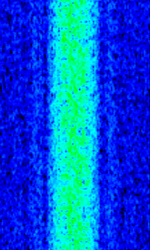 |
||||
| Grimeton Radio (SAQ) | SAQ stands as the sole transmitter reliant on an alternating current generator. Recognized as a UNESCO World Heritage site, it employs the last operational Alexanderson alternator for RFRadio Frequency production. | 17.2 kHzKiloHertz (kHz) 10^3 Hz — 40.4 kHzKiloHertz (kHz) 10^3 Hz | CWContinuous Wave | Sweden | 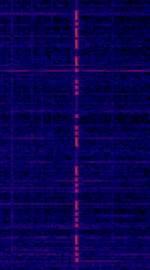 |
|||
| ICV | ICV is a NATONorth Atlantic Treaty Organization-operated VLFVery Low Frequency (3-30 kHz) transmitted located in the island of Tavolara, Sardinia, Italy. | 20.27 kHzKiloHertz (kHz) 10^3 Hz — 20.76 kHzKiloHertz (kHz) 10^3 Hz | CWContinuous Wave | MSKMinimum-Shift Keying (When Shift/Bd = 0.5. It is impossible to get this ratio to be lower than 0.5, hence it is called the 'Minimum' shift.) | Italy | 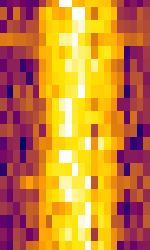 |
||
| Induction cooker interference | RFRadio Frequency interference from nearby induction cooker can sometimes be mistaken for a real LFLow Frequency (30-300 kHz) or VLFVery Low Frequency (3-30 kHz) transmission. | USBUpper Side Band Modulation (Radio, referring to reception and modulation mode)Universal Serial Bus (Computer, referring to USB Ports and cables) | OOKOn-Off Keying Modulation | Worldwide | 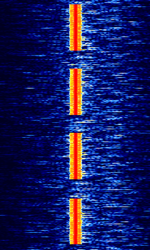 |
|||
| Jim Creek (NLK) | Jim Creek Naval Radio Station is used by the US Navy to transmit commands to distant submarines. | 24.8 kHzKiloHertz (kHz) 10^3 Hz | CWContinuous Wave | MSKMinimum-Shift Keying (When Shift/Bd = 0.5. It is impossible to get this ratio to be lower than 0.5, hence it is called the 'Minimum' shift.) | 300 HzHertz (Hz), unit of frequency, defined as one cycle per second (1 Hz). | United States | 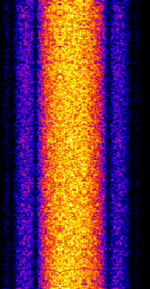 |
|
| Lightning Sferics | VLFVery Low Frequency (3-30 kHz) RFRadio Frequency emissions from lightning in the atmosphere that can affect up to HFHigh Frequency (3-30 MHz) frequencies and beyond depending on strength. Has a popping crackle sound with both USBUpper Side Band Modulation (Radio, referring to reception and modulation mode)Universal Serial Bus (Computer, referring to USB Ports and cables) and AMAmplitude Modulation modes of reception. | 0 HzHertz (Hz), unit of frequency, defined as one cycle per second (1 Hz). — 30 MHzMegaHertz (MHz) 10^6 Hz | Worldwide | 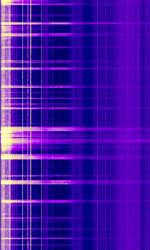 |
||||
| NML | Naval Radio Transmitter Facility (NRTF) transmits encrypted commands to submerged US submarines. | 25.2 kHzKiloHertz (kHz) 10^3 Hz | CWContinuous Wave | FSKFrequency-Shift Keying | 300 HzHertz (Hz), unit of frequency, defined as one cycle per second (1 Hz). | United States | 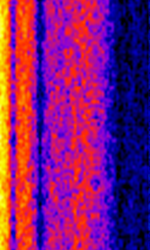 |
|
| NOV | TACAMO (take charge and move out) is the back up communications system to the US nuclear submarine fleet in case an attack on land based transmitters disables them. A rotating fleet of Navy E6 jets equipped with 200 KW transmitters and two 2½-mile-long trailing wire antennas (TWA) at 35,000 ft altitude to provide 24/7 coverage. Short pings are transmitted every few seconds. | 26.9 kHzKiloHertz (kHz) 10^3 Hz | CWContinuous Wave | Worldwide | 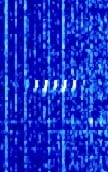 |
|||
| NPM | Naval Radio Transmitting Facility (NRTF) sends encrypted commands to submerged US naval submarines in the Pacific. | 21.4 kHzKiloHertz (kHz) 10^3 Hz | CWContinuous Wave | FSKFrequency-Shift Keying | 300 HzHertz (Hz), unit of frequency, defined as one cycle per second (1 Hz). | United States | 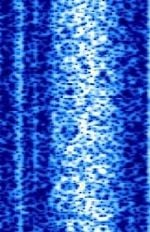 |
|
| NWC | Naval Communication Station (NCS) Harold E. Holt. Used jointly by the Australian and United States navies to transmit encrypted orders to submerged submarines in the Pacific. | 19.8 kHzKiloHertz (kHz) 10^3 Hz | CWContinuous Wave | FSKFrequency-Shift Keying | 300 HzHertz (Hz), unit of frequency, defined as one cycle per second (1 Hz). | Australia |  |
|
| RDL | RDL is a Russian VLFVery Low Frequency (3-30 kHz) station located in Krasnodar. It is one of the few VLFVery Low Frequency (3-30 kHz) stations that changes modes during routine transmissions. | 18.1 kHzKiloHertz (kHz) 10^3 Hz | CWContinuous Wave | FSKFrequency-Shift Keying, CWContinuous Wave-FSKFrequency-Shift Keying | Russia |  |
||
| Radioteknicheskaya Systema Dalyoloiy Navigatsii (RSDN-20) | Russian Hyperbolic Radio Navigation System. Presumed to be used for Russian submarines and aircraft in the northern hemisphere, possibly worldwide. | 11.91 kHzKiloHertz (kHz) 10^3 Hz — 14.88 kHzKiloHertz (kHz) 10^3 Hz | CWContinuous Wave | 20 HzHertz (Hz), unit of frequency, defined as one cycle per second (1 Hz). | Russia | 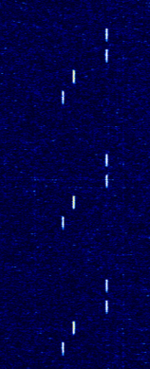 |
||
| SAS/SRC | Swedish navy transmitter for submarine communication. It shares the antenna with SAQ (Grimeton Radio) | 40.4 kHzKiloHertz (kHz) 10^3 Hz | MSKMinimum-Shift Keying (When Shift/Bd = 0.5. It is impossible to get this ratio to be lower than 0.5, hence it is called the 'Minimum' shift.) | Sweden | 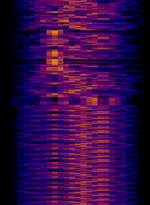 |
|||
| SAS2 | Swedish navy transmitter for submarine communication. It shares the antenna with SAQ (Grimeton Radio) and is activated less often as the other Swedish transmitters used for VLFVery Low Frequency (3-30 kHz) submarine communication. Usually, it works with reduced power. | 42.5 kHzKiloHertz (kHz) 10^3 Hz | MSKMinimum-Shift Keying (When Shift/Bd = 0.5. It is impossible to get this ratio to be lower than 0.5, hence it is called the 'Minimum' shift.) | Sweden | 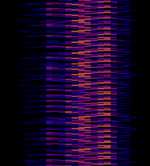 |
|||
| SAS3 | Swedish navy transmitter for submarine communication. It shares the antenna with SAQ (Grimeton Radio). | 44.2 kHzKiloHertz (kHz) 10^3 Hz | MSKMinimum-Shift Keying (When Shift/Bd = 0.5. It is impossible to get this ratio to be lower than 0.5, hence it is called the 'Minimum' shift.) | Sweden | 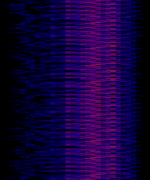 |
|||
| SHR | Swedish navy transmitter for submarine communication. It shares the antenna with SAQ (Grimeton Radio). | 38 kHzKiloHertz (kHz) 10^3 Hz | MSKMinimum-Shift Keying (When Shift/Bd = 0.5. It is impossible to get this ratio to be lower than 0.5, hence it is called the 'Minimum' shift.) | Sweden | 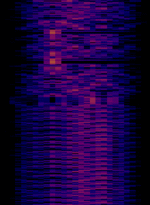 |
|||
| Switch-mode power supply interference | Switch-mode power supplies, used in many types of electronic devices, can generate RFRadio Frequency noise on wide frequency ranges. | 10 kHzKiloHertz (kHz) 10^3 Hz — 200 MHzMegaHertz (MHz) 10^6 Hz | USBUpper Side Band Modulation (Radio, referring to reception and modulation mode)Universal Serial Bus (Computer, referring to USB Ports and cables) | Worldwide | 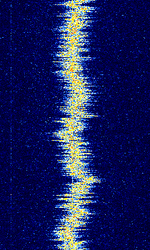 |
Pages in category "VLF"
The following 19 pages are in this category, out of 19 total.